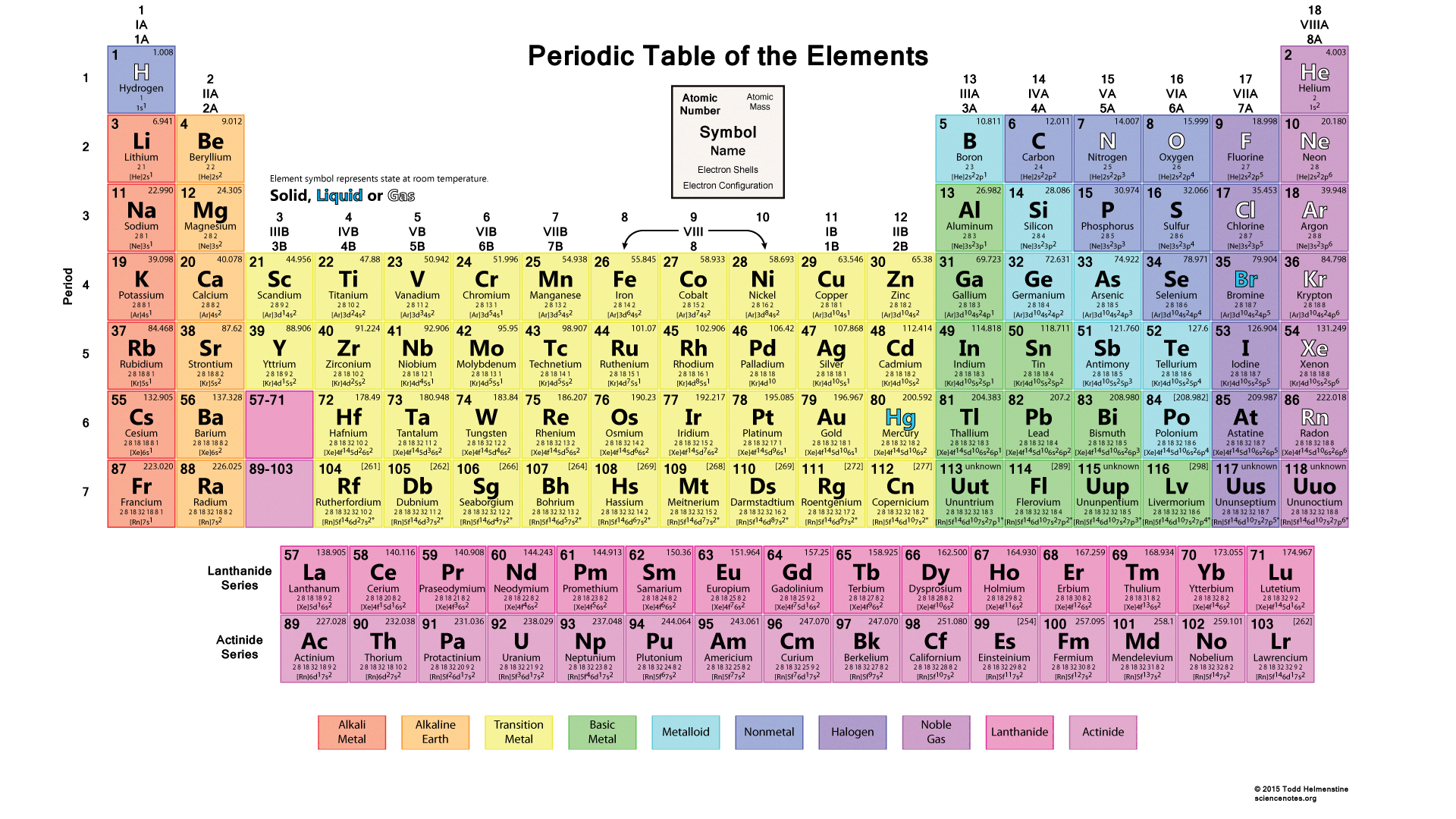


Periodic table color coded code#
Electricity and heat can travel through metalloids but not as easily as they travel through metals. code to plot the periodic table color coded by what astronomical source they came from - GitHub - gillenbrown/periodictable: code to plot the periodic table color. They can be shiny or dull and their shape is easily changed. The shape of nonmetals cannot be changed easily because they are brittle and will break.Įlements that have properties of both metals and nonmetals are called metalloids. You may also use the color-coded periodic table chart with names, symbols, and atomic weights to find specific information you need for your work. As compared to metals, they have low density and will melt at low temperatures. Features 10 legends for explanation of the color codes. The periodic table in the first and second slides are categorically color-coded according to their group. Here, the colors show the blocks formed by the elements with their outer electrons in the same electron shell: s-block (blue), d-block (yellow), p-block (red). Their surface is dull and they don’t conduct heat and electricity. The period table template provides information about the elements, their groups, and the various trends they show. Nonmetals, on the right side of the periodic table, are very different from metals. Heat and electricity travel easily through metals, which is why it is not wise to stand next to a flagpole during a thunderstorm! Metals will corrode, gradually wearing away, like rusting iron. Find many great new & used options and get the best deals for Periodic Table of Elements Colour Coded Poster Sizes A4 to A0 UK Seller E095 at the best. Their shape can be easily changed into thin wires or sheets without breaking. They are usually shiny, very dense, and only melt at high temperatures. The periodic table on the left separates elements into three groups: the metals (green in the table), nonmetals (orange), and metalloids (blue). What's a molecule? Metals, Nonmetals, & Metalloids


 0 kommentar(er)
0 kommentar(er)
